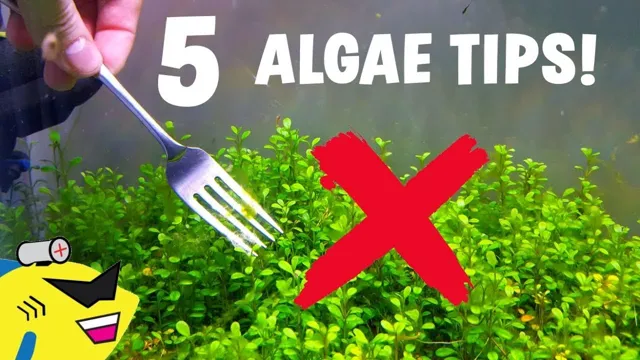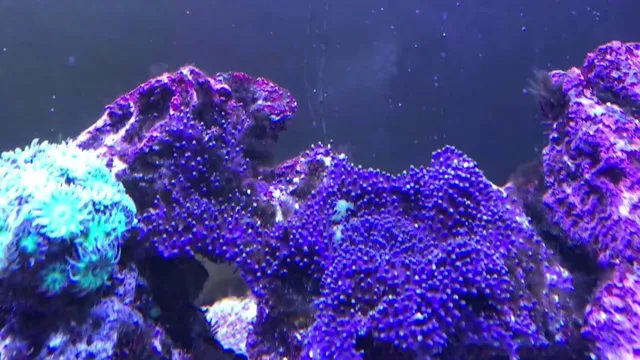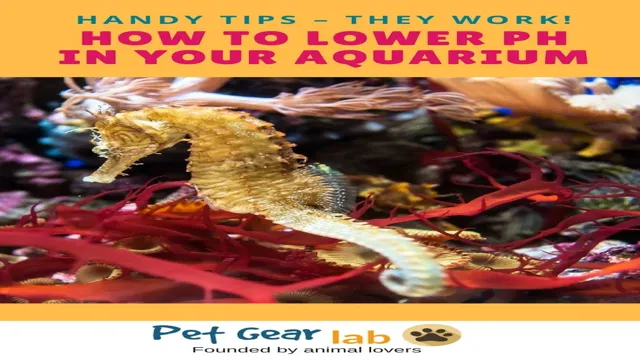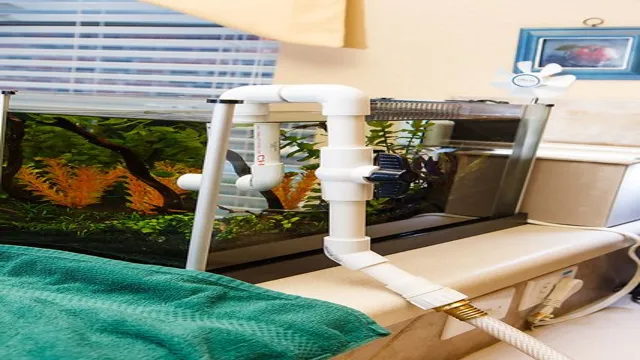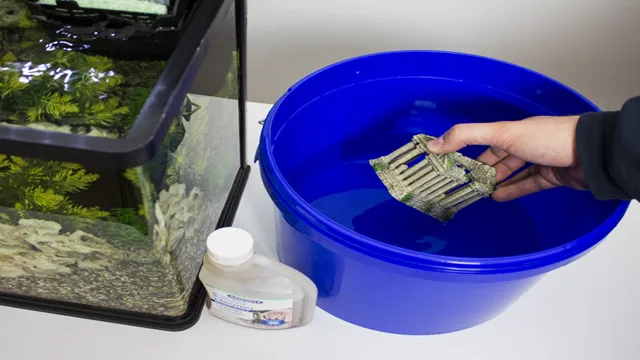Are you tired of looking at your aquarium and seeing an unsightly layer of green algae covering everything inside? Algae is a common problem for many aquarium owners, but luckily, it’s not one that’s difficult to solve. This blog will guide you on how to remove algae from your aquarium stuff, giving you a clear and healthy environment for your aquatic pets to thrive in. With a few easy steps and some simple tools, you can kiss those algae problems goodbye.
So, dive in and let’s get started!
Understanding Algae Buildup
If you have an aquarium, algae buildup can be quite common and can cause a lot of frustration. Algae buildup happens due to excess nutrients in the water, which typically stems from overfeeding or poor filtration. One of the most effective ways to remove algae is to use an aquarium scraper.
A scraper can be used to scrape the algae off of the glass walls and any decorations in the tank. However, be sure to be gentle while scraping to avoid scratching any surfaces. Another effective method is to use algae-eating fish, such as catfish or plecos.
These fish are natural grazers and can help keep your tank clean. Algae buildup can also be prevented by keeping your tank clean and not overfeeding your fish. By taking the necessary steps to maintain a healthy tank and removing any excess algae buildup, you can ensure a happy and healthy environment for your aquatic pets.
Types of Algae
Algae buildup is a common problem facing many pool owners. Algae are tiny aquatic organisms that thrive in warm, stagnant water. There are several types of algae, including green algae, yellow or mustard algae, and black or blue-green algae.
Green algae are the most common type and can quickly turn your pool water into a green swamp-like mess. Yellow algae is more difficult to get rid of and can form slimy, mustard-colored patches on your pool walls and floor. Black or blue-green algae are the most stubborn and can form deep-rooted patches that are difficult to remove.
Understanding the type of algae in your pool is the first step in treating it effectively. By keeping your pool water well-balanced, regularly brushing and vacuuming the walls and floor, and using appropriate algaecides, you can help prevent and eliminate algae buildup. Remember, prevention is always better than cure, so it’s essential to maintain proper pool hygiene and water chemistry to keep your pool sparkling clean and algae-free.

Causes of Algae in Aquariums
Algae buildup is a common problem in aquariums that can have various causes. Understanding these causes can help you prevent and treat algae growth in your tank. One of the primary causes is excess nutrients, particularly nitrates and phosphates, which are essential for plant growth but can also fuel algae growth.
Overfeeding, overstocking, and poor filtration can lead to nutrient buildup. Light is another critical factor as too much or too little light can disrupt the balance of your aquarium’s ecosystem, allowing algae to thrive. Additionally, poor water quality, low oxygen levels, and fluctuating temperatures can all contribute to algae buildup.
Keeping your aquarium clean, well-maintained, and balanced can help prevent algae growth and provide a healthy environment for your fish and other aquatic animals. By addressing the underlying cause, you can keep your aquarium looking clear and beautiful.
Cleaning Aquarium Stuff
Algae is a common problem in aquariums, and it can cause serious issues if not taken care of properly. Getting algae off of aquarium stuff may seem like a daunting task, but with the right tools and techniques, it can be easy. One effective method is to use an algae scraper, which is a tool designed specifically for removing algae from glass surfaces.
Simply scrape the algae off the glass using the scraper, making sure to be gentle to avoid scratching the surface. For plastic or other non-glass surfaces, a soft-bristled brush can be used with a mixture of vinegar and water to remove the algae. For especially stubborn algae, hydrogen peroxide can be used, but be sure to rinse the surface thoroughly and remove any traces of the peroxide before putting it back in the aquarium. (See Also: How to Make an Aquarium Powerhead: A Beginner’s Guide to Building Your Own Submersible Pump)
Regular cleanings and maintenance can help prevent future algae buildup, helping to ensure the health and wellbeing of your aquatic pets.
Tools Needed to Clean
Cleaning aquarium stuff can be a chore, but it’s necessary to keep your fish and plants healthy and happy. To make this job easier, it’s essential to have the right tools on hand. A good algae scraper is a must-have for removing unsightly algae from the walls of the tank.
A siphon and gravel vacuum are also necessary to remove debris from the bottom of the tank, allowing for proper water circulation. A pair of long-handled tweezers are essential for removing dead leaves and other plant matter from the tank. Lastly, a bucket dedicated to aquarium use is necessary to hold the old water while you clean the tank.
Having these tools on hand will make cleaning your aquarium a breeze – your fish and plants will thank you for it!
Different Cleaning Methods
When it comes to cleaning your aquarium, there are several different methods you can use to ensure that everything stays clean and healthy for your fish. One effective method is to use a gravel vacuum to clean the substrate. This device sucks up debris and uneaten food from the bottom of the tank, preventing any buildup that could harm your fish.
Another way to clean your aquarium is to scrub the interior walls with an algae scrubber. This will help remove any unsightly algae growth and prevent it from coming back. You can also use specialized cleaners for your filter media and other equipment to keep everything running smoothly.
Of course, it’s important to remember that you should never do a complete water change in your aquarium. Fish thrive in stable water conditions, and a sudden change could cause stress or even harm them. Instead, do partial water changes regularly to keep the water clean and clear.
Overall, keeping your aquarium clean and healthy requires some effort and dedication, but following these methods and being consistent in your cleaning routine will help your fish thrive and stay happy and healthy for years to come.
Precautions When Cleaning
When it comes to cleaning your aquarium, it’s important to take precautions to ensure the safety of your fish and other aquatic life. First and foremost, make sure to unplug all electrical equipment before cleaning. This will prevent any accidents or damage to the equipment.
Secondly, avoid using any harsh chemicals or soaps when cleaning the aquarium or accessories such as filters, décor, and heaters. These chemicals can be harmful to your aquatic pets and can also damage the equipment. Instead, use a gentle aquarium-specific cleaner or simply clean with warm water.
Lastly, make sure to rinse everything thoroughly to remove any cleaning solution or residue before placing it back into the aquarium. This ensures that no harmful substances are introduced into the water. By following these simple precautions, you can safely and effectively clean your aquarium without harming your pets.
Preventing Algae Buildup
Algae is a common problem in aquariums. It can grow on the decorations, plants, or even on the glass itself, creating an unsightly mess. Thankfully, there are ways to prevent algae buildup and keep your aquarium looking clean and healthy. (See Also: How to Prepare an Aquarium for Tropical Fish: A Comprehensive Guide for Beginners)
One effective method is to reduce the amount of light your aquarium receives. Algae thrive on light, so limiting the amount of light your aquarium gets can significantly reduce the amount of algae growth. Regular water changes and cleaning the filter can also help to remove excess nutrients that algae feed on.
Another option is to add algae-eating fish or invertebrates to your aquarium. These creatures can help to keep the algae in check and prevent it from becoming a problem. If you do notice algae starting to build up, don’t panic! Simply use a clean algae scraper or a gentle scrub brush to remove the algae from your aquarium decorations, plants, or glass.
With the right prevention methods and a little effort, you can keep your aquarium looking beautiful and algae-free!
Maintaining Water Quality
Maintaining Water Quality: Preventing Algae Buildup If you’re a pool owner, you’ve probably experienced the dreaded green tint of algae in your water. Algae buildup can be a real nuisance and can even lead to health concerns if not addressed promptly. The best way to prevent algae buildup is to maintain proper water chemistry and circulation.
First and foremost, make sure your pH and chlorine levels are within the recommended ranges for your pool. In addition, regular brushing and vacuuming of the pool walls and floors can help prevent algae growth. It’s also important to regularly clean your pool filter, as a dirty filter can contribute to algae growth.
Finally, consider using an algaecide as part of your regular pool maintenance routine. By taking these preventive measures, you can enjoy crystal clear water all season long. Remember, a little regular maintenance goes a long way in preventing algae buildup!
Proper Lighting and Placement of Aquarium Stuff
Proper Lighting and Placement of Aquarium Stuff – Preventing Algae Buildup If you’re an aquarium enthusiast, you know how annoying algae buildup can be. Not only is it unsightly, but it can also harm your fish. One way to prevent algae buildup in your aquarium is by ensuring proper lighting and placement of your aquarium stuff.
When it comes to lighting, you want to make sure that your aquarium is not receiving too much direct sunlight. This can lead to an increase in temperature, which can promote algae growth. Instead, use artificial lighting, and make sure it’s appropriate for the needs of your aquarium plants and fish.
Another thing you want to consider is the placement of your aquarium decor and plants. You don’t want to place them too close to the surface of the water, as this can block light and create stagnant areas where algae can grow. Instead, place them at varying heights in the aquarium to ensure even lighting and proper water flow.
In addition to proper lighting and placement, it’s important to maintain good water quality in your aquarium. This includes regular water changes, proper filtration, and avoiding overfeeding your fish. A clean and healthy environment will help prevent algae growth and keep your aquarium looking beautiful.
By taking these steps, you’ll be able to enjoy your aquarium without having to worry about unsightly algae buildup. (See Also: How to Attach Moss to Driftwood Aquarium: Tips and Tricks)
Conclusion
In conclusion, getting rid of algae from aquarium stuff can be a bit of a slimy situation. But fear not, with these simple and effective tips, you can keep your aquarium looking clean and pristine. Just remember to maintain a proper balance of light, nutrients, and cleaning routines for your aquatic friends to thrive.
Don’t let algae take over your tank and turn it into a green monster. It’s time to algae-brate a clean and healthy aquarium!”
FAQs
What is algae and why is it harmful in an aquarium?
Algae is a type of aquatic plant that can grow in aquariums and can be harmful to aquatic life by taking up oxygen and blocking access to light. It can also make the aquarium look dirty and unsightly.
What are some ways to prevent algae growth in an aquarium?
To prevent algae growth, it is important to have a balanced and well-maintained aquarium ecosystem. This includes regular water changes, proper filtration, and controlling the amount of light that enters the tank. You can also add algae-eating fish or invertebrates to your aquarium, such as snails or plecos.
Can algae spread from one aquarium to another?
Yes, algae can spread from one aquarium to another if items such as nets or plants are moved from one tank to another without proper cleaning. It is important to sterilize items before introducing them to a new tank.
How can I safely remove algae from aquarium decorations?
To safely remove algae from aquarium decorations, it is best to use a soft-bristled brush or a algae scraper. Avoid using harsh chemicals or abrasives that can damage the decoration or harm aquatic life.
Can algae be harmful to human health?
While algae is not typically harmful to human health, some types of algae can produce toxins that can be harmful if ingested. It is important to wash your hands thoroughly after handling anything from the aquarium.
What are some signs that there may be too much algae in my aquarium?
Signs that there may be too much algae in your aquarium include cloudy water, a strong odor, visibly dirty decorations, or a decrease in the health and activity of your aquatic life.
How often should I clean my aquarium to prevent algae growth?
It is recommended to clean your aquarium once a week to prevent algae growth. This includes removing any excess food or waste, vacuuming the gravel, cleaning the decorations, and checking the water parameters.

